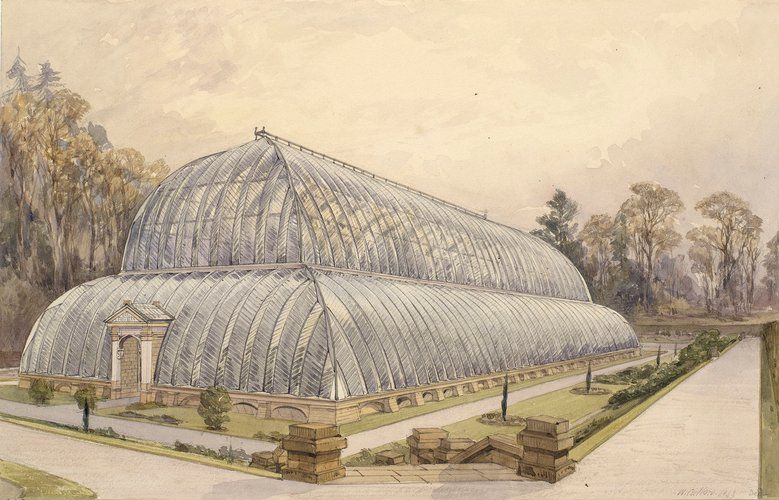England's Magnificent Gardens
Roderick Floud
More books on Recreation

The average cost of a show garden at The Chelsea Flower Show is $1.3 million
'Consols' is short for 'consolidated annuities', which was the govts promise to repay loans + interest.
As Ind Revn gathered pace, England became increasingly urban. Totally unplanned - just millions of individual decisions to move to the city. And as there was no decent public transport, jobs and houses had to be close to each other. The result was apoisoned environment and a stunted, unhealthy population.
In the late C18 and early C19, every Br Navy ship on a long voyage carried a botanist, paid by the navy and by botanical gardens. When ship docked on a foreign shore, his job was to race ashore and seek out new plants to be brought back to Kew.
1696 'social table' produced by Gregory King showed income disparity much greater than today. 200 noble families each received the equivalent of $15 million a year, 400 times that of a labouring family.
When Britain outlawed slavery in 1833, paid slave owners &pund;20 million (equivalent of nearly $20 billion today) for the loss of their "property". The "property", the slaves, received nothing. Some of the money went into two of Capability Brown's great gardens: Dodington House park (which is now owned by Sir James Dyson) and Harewood in west Yorkshire.
At the height of his career, between 1762 and 1769, Capability Brown's income was always above (equiv of) $25 million, and in two of those years was above $60 million.
Early C19, London was producing about 300,000 tons of manure, both horse and human. Much of it was barged up R Thames to market gardens and nurseries, both as fertilizer and as heating.
Until end of C19 there was no formal training for any job outside the law, medicine or church. The factories, canals, railways and machines of Ind Rev were built by men who learnt on the job.
Joseph Paxton was working as a 23 yo under gardener at Chiswick when he charmed the Duke of Devonshire into giving him job of head gardener at Chatsworth. As he recalled, he arrived at Chatsworth at 4.30am, climbed over a gate into the garden where he set the men to work and surveyed the whole garden before going in to breakfast with the housekeeper and her niece. "The latter fell in love with me, and I with her, and thus completed my first morning's work at Chatsworth before nine o'clock."
'Technology' means 'how we do things'. It is not just about machines; it refers to the working methods of every form of economic activity. Technology changes because someone has a bright idea about doing things a bit better and manages to convince others to adopt idea. We call the 'idea' an 'invention', and the process of putting it into effect, 'innovation'.
More books on Inventions
England has many rivers, but hardly any natural lakes south of the Lake District. Almost all lakes see today are man-made. Pond construction and maintenance was a huge task. Even though usually quite shallow, often meant shifting half a million barrow loads of earth. Then, to stop them leaking, they had to be made impermeable. This was done with 'puddling' - layers of clay mixed with lime spread on the lake bed, and then rammed by men with big hammers. The layers of clay could be four foot thick in a pond only three feet deep.
The model for aristocratic water features was Louis XIV's Versailles, where more water was used than all of Paris got. The pipes all came from the Duke of Bolton's lead factory (he made a profit of £250,000 on the deal, probably the equivalent of half a billion dollars today). But could only get enough water to supply a fraction of the fountains at any one time, so an elaborate system devised with teams of gardeners turning fountains on as royal party approached, and turned off again as they left.
More books on Royalty
The canals that were dug in C17 and 18 take their name from the rectangular ponds dug in royal and aristocratic gardens.
The canal age began with 1761 Bridgewater Canal to carry coal to Manchester from the Duke of Bridgewater's mines in Wolsley. Despite costing equivalent of $360 million, it generated huge profits and made him very wealthy.
Romans had hypocaust central heating (usually a raised floor with heated air or water circulating beneath) but fell out of use until C17, when used to care for plants (but not people).
Originally 'greens' referred to evergreen trees, particularly citrus, and it was for them that first 'greenhouse' were built. They were heated either from coal fired furnaces (with boys employed to sleep beside them to keep them going all night), or with fermnting manure or 'tan' (oak bark that had been used for tanning).
Greenhouses pioneered use of glass and structural iron. Invention of sheet glass at end of C17 madeit possible to produce larger panes.
Books by Title
Books by Author
Books by Topic